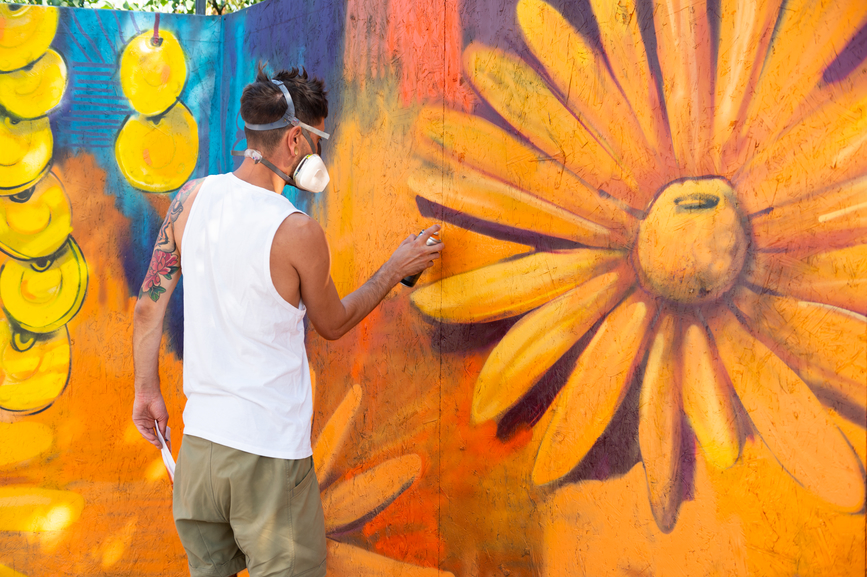January 28, 2021 / Gig Worker Research
Arts and gig workers need a more inclusive social contract
Angie Kim
Dr. Angie Kim has served as President and CEO for the Center for Cultural Innovation (CCI), a California-based knowledge and financial services incubator for individual artists, since 2014. She is also the founder of CCI’s national, pooled fund program, AmbitioUS, which invests in alternative economic paradigms of and federated infrastructure by those most dispossessed—primarily African American and Native American communities—who are seeking financial self-determination in order to preserve and support their cultural identity and artistic expressions on their own terms.
In 2019, California passed A.B. 5. This law clarified and tightened existing law by establishing a stricter test to determine who is considered an employee.
In doing so, it broadened access to the rights, benefits, and protections provided to employees. The net effect of A.B. 5 has been to require many employers to convert their independent contractor workforce to employees by creating a more rigorous and more clear legal standard. In the arts, it brought attention to longstanding issues of worker misclassification in parts of the sector that are heavily reliant on the lower cost labor of independently contracted workers. A.B. 5 went into effect on January 1, 2020. Many arts organizations and artists struggled in their efforts to understand and comply with this new law. Then, three months later, the COVID-19 pandemic hit and unemployment skyrocketed.

Nationwide, 10.6 million workers are classified as independent workers (roughly 7% of the workforce), and this share of the workforce has been rising with more workers living artists’ precarious gig-work lives. Artists and arts workers are three times as likely to be self-employed than the general workforce. In California, 35% of arts workers are self-employed and work on contract or “gig” work, and no fewer than 600,000 Californians are considered arts workers. The pandemic has revealed the vulnerability of too many Californians whose work as independent contractors left them unprotected in the event of a prolonged pause in income.This is exactly the problem that A.B. 5 was attempting to fix in addressing misclassification. The federal Pandemic Unemployment Assistance provided some support, but the program in no way meets the need for a growing percentage of the workforce that operates as independent contractors.
A.B. 5, and subsequent legislation A.B. 2257, and the lack of adequate safety nets in the wake of COVID-19 create a moment to reimagine labor policies and practices to better fit the reality of today’s workforce. Independent artists and arts workers have long exemplified what it looks like to work outside of employment protections. They provide a case study in the ways current labor policies, such as A.B. 5, impact the real lives of workers. A fairer system for arts workers would point the way toward an improved and updated system with more protections and support for the many different and emerging kinds of workers who are earning income and need to be included in labor laws.
The Center for Cultural Innovation, with support from the William and Flora Hewlett Foundation, commissioned a new report to help arts advocates, labor advocates, and policy makers create more inclusive systems that expand protections and benefits for all types of workers. Arts Workers in California is authored by the Urban Institute. The report outlines the working arrangements of California’s arts workers and sheds new light on the challenges and issues they face, particularly when working as independent contractors. It also identifies policy shifts to update systems, for those in California or nationally, that could be more inclusive of artists and those who similarly operate outside the traditional bounds of employment. Such protections include collective bargaining power for all types of workers, access to health insurance, family leave, anti-discrimination, and savings toward retirement.
New solutions are needed that include independent workers in social insurance programs, so as to protect artists, reduce barriers to entry to arts work by people of color, and enable arts workers to move more freely across hiring entities that struggle to afford employing them. Solutions that work for artists will work for millions of others.
Arts Workers in California is downloadable by clicking the image above or from the Urban Institute site.
Read a post from the Report’s authors here.
Read an op-ed written by Angie Kim, CCI’s President and CEO, and Amanda Briggs, Research Associate at Urban Institute, here.
SELECT PRESS COVERAGE
Gereben, J. (2021, February 1). A hefty new study looks beyond AB-5 to the future of labor policies and the arts. San Francisco Classical Voice. READ HERE.
Veltman, C. (2021, February 4). For some small arts groups in CA, adhering to labor law means not paying artists. KQED. READ HERE.
Janiak, L. (2021, March 9). Two new reports reveal just how much our society fails independent arts workers. Datebook/San Franisco Chroncle. READ HERE.
Citation:
Briggs, A., Brown, S. K., Shakesprere, J., Spaulding, S., Spievack, N., Yang, J. R. (2021, January). Arts Workers in California: Creating a More Inclusive Social Contract to Meet Arts Workers’ and Other Independent Contractors’ Needs. Commissioned by Center for Cultural Innovation with support from the William and Flora Hewlett Foundation. https://www.urban.org/research/publication/arts-workers-california


